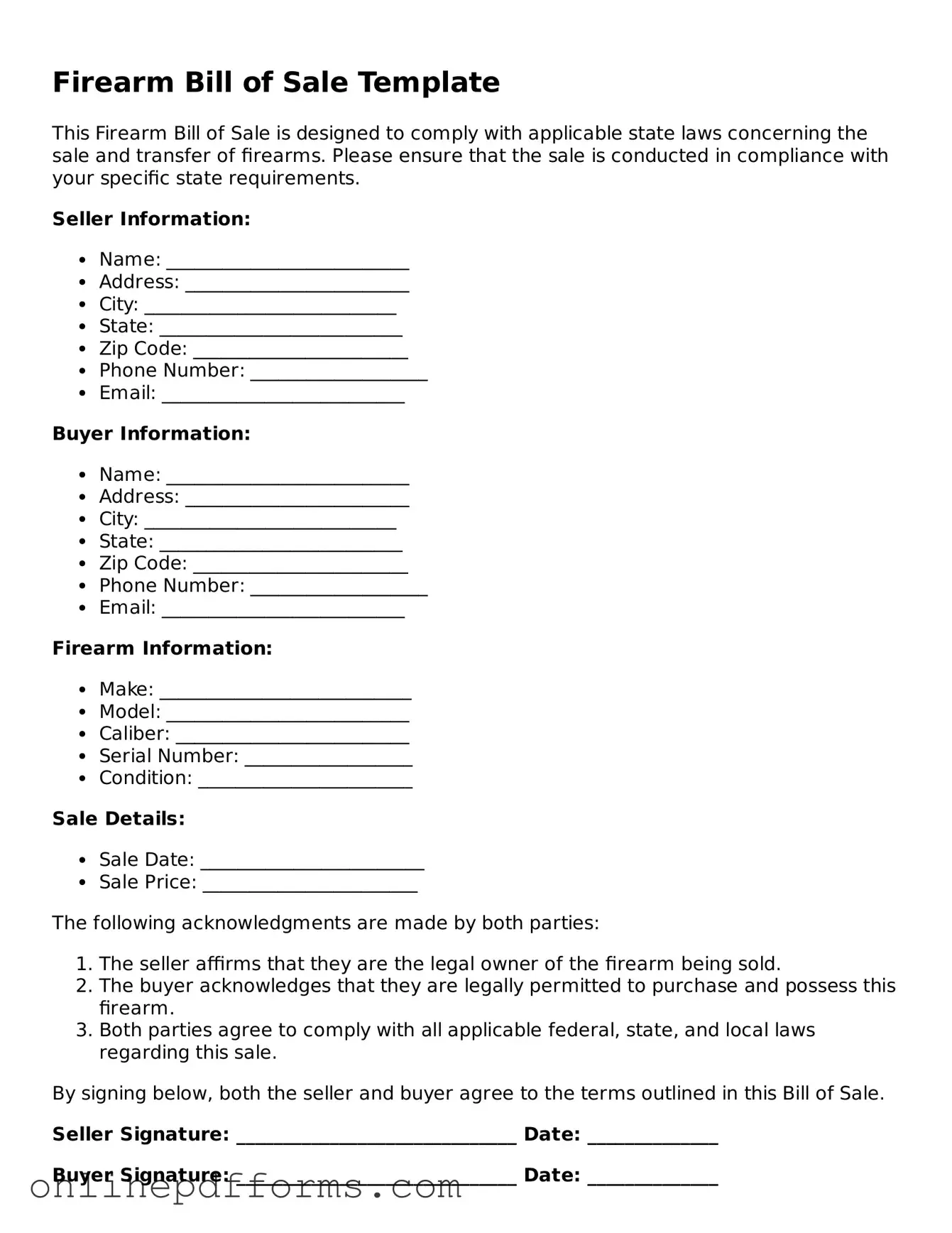The Firearm Bill of Sale form shares similarities with a Vehicle Bill of Sale. Both documents serve as proof of transfer of ownership. When buying or selling a vehicle, the seller provides a bill of sale to the buyer, detailing the vehicle's make, model, year, and VIN. Similarly, a Firearm Bill of Sale includes information about the firearm, such as its make, model, and serial number. Both forms protect the interests of the buyer and seller by documenting the transaction.
An Equipment Bill of Sale is another document akin to the Firearm Bill of Sale. It is used when buying or selling equipment, like machinery or tools. Just like the firearm form, it includes details about the item being sold, such as its condition and any included accessories. Both documents ensure that the transaction is recorded, providing a reference in case of disputes or for warranty purposes.
A Personal Property Bill of Sale is another comparable document. This form is used for various types of personal property transactions, such as furniture or electronics. It outlines the specifics of the item being sold, including its condition and sale price. The Firearm Bill of Sale functions similarly by documenting the details of the firearm transfer, ensuring both parties have a clear understanding of the transaction.
In the realm of ownership transfer, the importance of a North Carolina Trailer Bill of Sale form cannot be overstated, as it provides clear evidence of a sale while capturing essential details about the trailer, buyer, and seller. Much like other transaction documents, including the Lease Agreement and Loan Agreement, this form ensures both parties have a mutual understanding of the terms. For those looking for comprehensive templates, Auto Bill of Sale Forms offer tailored solutions that facilitate smooth transactions in various states.
The Business Bill of Sale is relevant for those buying or selling a business. This document outlines the assets being transferred, including inventory and equipment. Like the Firearm Bill of Sale, it provides a record of the transaction and protects both the buyer and seller by detailing what is included in the sale.
A Real Estate Bill of Sale is used in property transactions, detailing the transfer of personal property associated with real estate, such as appliances or fixtures. This document, like the Firearm Bill of Sale, serves as a formal record of the transaction. Both documents help clarify what is included in the sale, preventing misunderstandings later on.
The Livestock Bill of Sale is similar in that it documents the sale of livestock. It includes details such as the type and number of animals sold. Just as with the Firearm Bill of Sale, this document provides proof of ownership transfer and protects both parties by clearly stating the terms of the sale.
An Artwork Bill of Sale is used for the sale of art pieces. This document includes details about the artwork, such as the artist's name, title, and medium. Like the Firearm Bill of Sale, it serves to confirm the transfer of ownership and protect the interests of both the buyer and seller.
Finally, the Pet Bill of Sale is relevant for those buying or selling pets. This document outlines the specifics of the pet, including breed, age, and health status. Similar to the Firearm Bill of Sale, it provides a record of the transaction, ensuring both parties understand the terms of the sale and the responsibilities involved.
